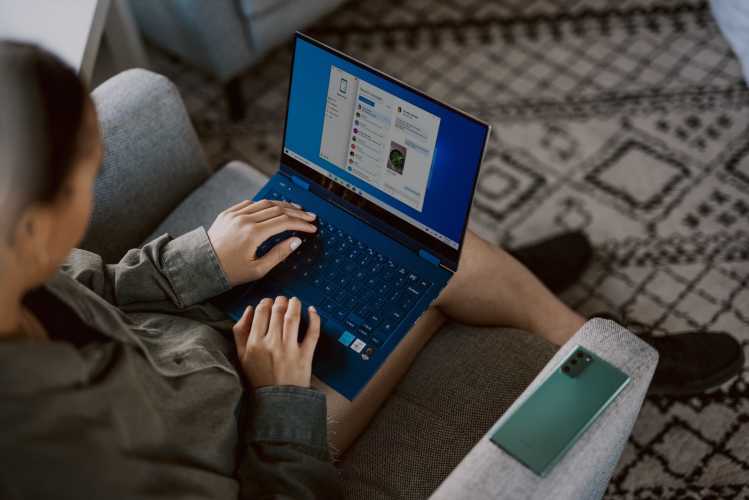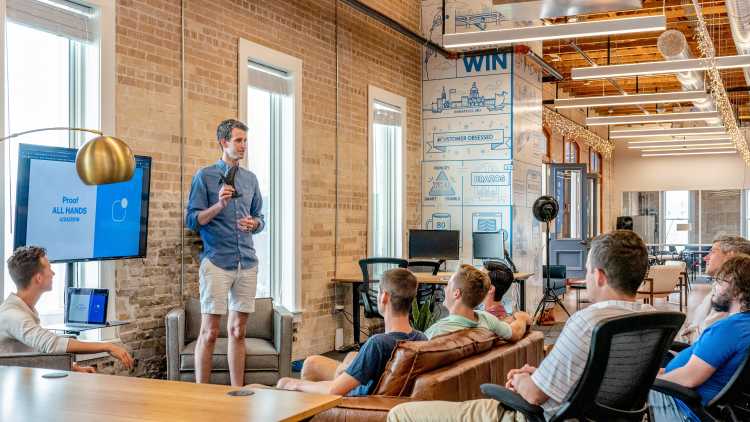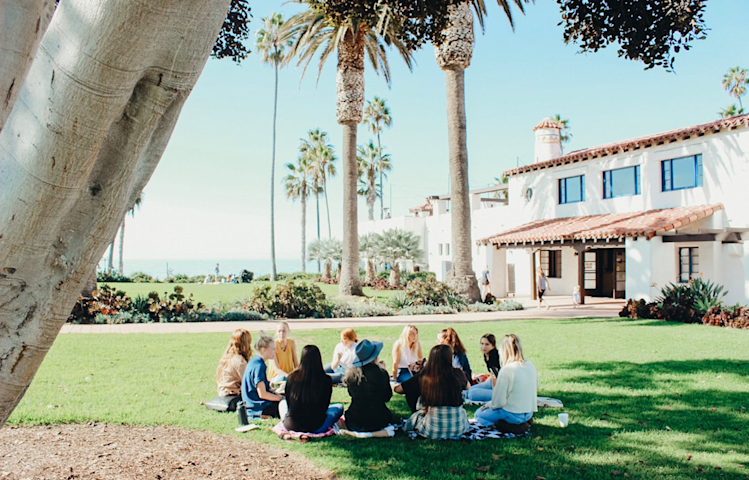Communities & Memberships
How to Build a Brand Community – Our 2025 Guide
Our guide for how to build a brand community details the steps necessary to create your own thriving brand community from start to finish.
Author
Mighty Team
Last Updated
March 25, 2025

Brand communities are important. Research shows that customers want stronger connections to brands–and brand communities are the answer. 27% of customers say that belonging to a brand community influences their decision to buy, and 66% of companies say community helps retain customers.
But while these numbers are exciting and telling, most brands haven’t even scratched the surface of the power of community. Last year, McKinsey identified the “community flywheel” as the business model for the 2020s, as community brands have better engagement and relationships with their customers AND see more value from these members.
In this article, we’ll give you a detailed guide for how to build a brand community, showing you the steps we’ve learned from watching thousands of thriving brand communities grow.
What is a brand community?
Definition of a brand community
A brand community is a group of people brought together by a shared passion for or interest in a brand. Brand communities thrive when users care enough to show up and spend time learning about the product, sharing ideas, or supporting each other’s growth. The best brand communities experience member-led growth, benefiting from the energy of members instead of just relying on top-down growth from the brand.
Here are some of the things a brand community needs to thrive:
Brand loyalty: People need to care enough about the brand to spend time and engage.
Common identity: Often members share identifying features that help them bond (e.g. Nike brand community for runners).
Learning opportunities: For products with knowledge and expertise involved, brand communities provide opportunities to learn and grow.
Belonging: You can’t fake a brand community with a good marketing campaign. People need to really feel like they can belong.
Safety: Just like every other type of online community, brands that want communities need to help members feel safe and heard.
Opportunities to share: Brand communities let members take the stage too. They can share content, ideas, their creations, etc. For example, in the Lego brand community people share their own Lego builds!
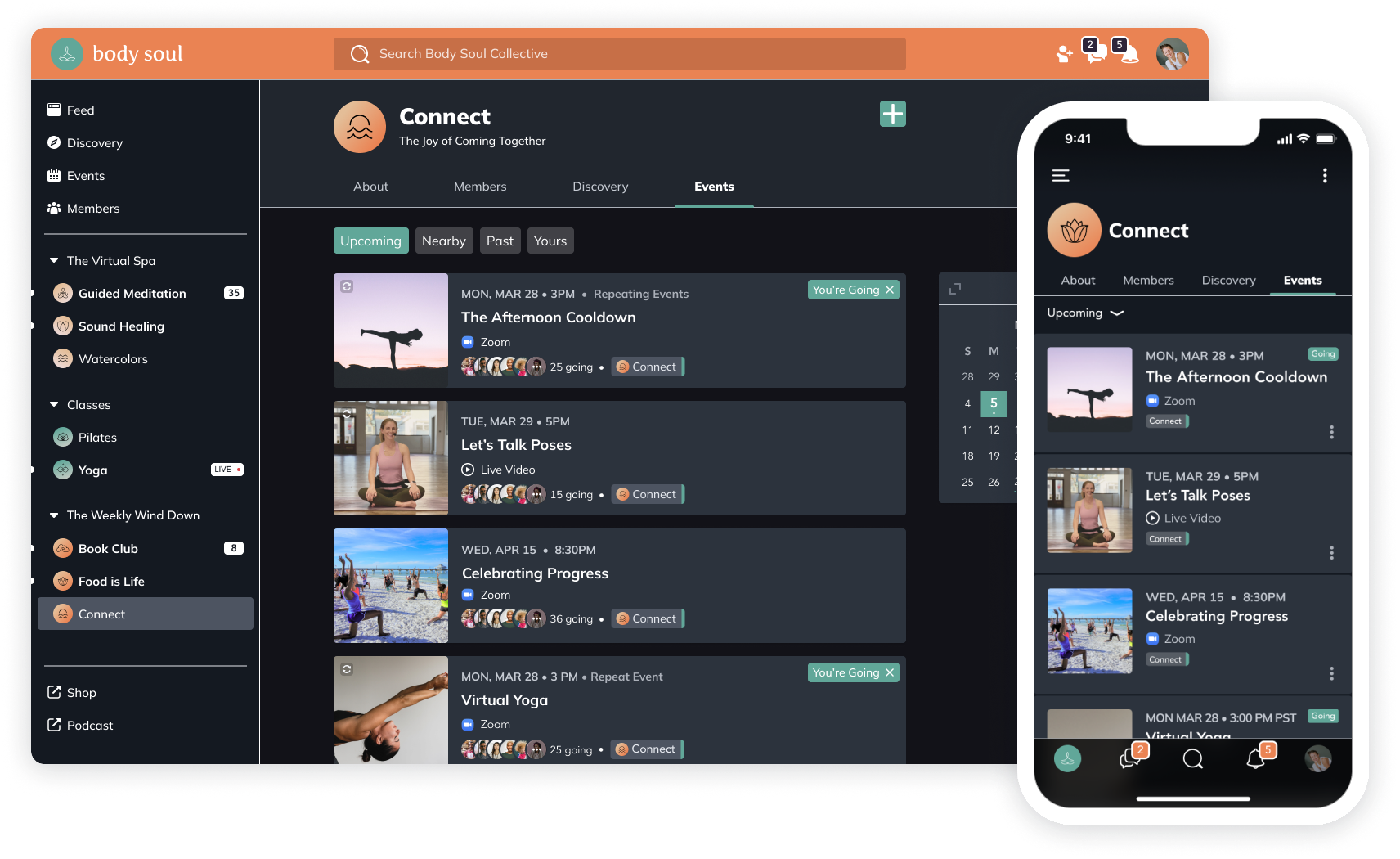
Why you need a brand community
Here’s why your brand needs a brand community:
Have a brand that grows itself: When we say “a brand that grows itself,” it sounds like spin. But it’s not. We’ve seen again and again that brand communities put growth on autopilot–as combining user-generated content with AI engagement features creates rapid and scalable growth.
Get instant product feedback and ideas: Brand communities are an awesome source of product feedback and ideas.
Put customer service on autopilot: If you want to know how to get your supermembers to do customer service for you, look at Apple. They have a community of supermembers who show up and answer iPhone users’ questions.
Keep your customers longer: Customers come and go. But members belong. Transfer your followers, subscribers, and customers into members and watch the lifetime value go up.
Add more revenue: Whether you’re directly monetizing your brand community or not, they do add more revenue. We see products launched in brand communities instantly find a willing audience.
If you need a name for your brand, try our AI brand name generator!
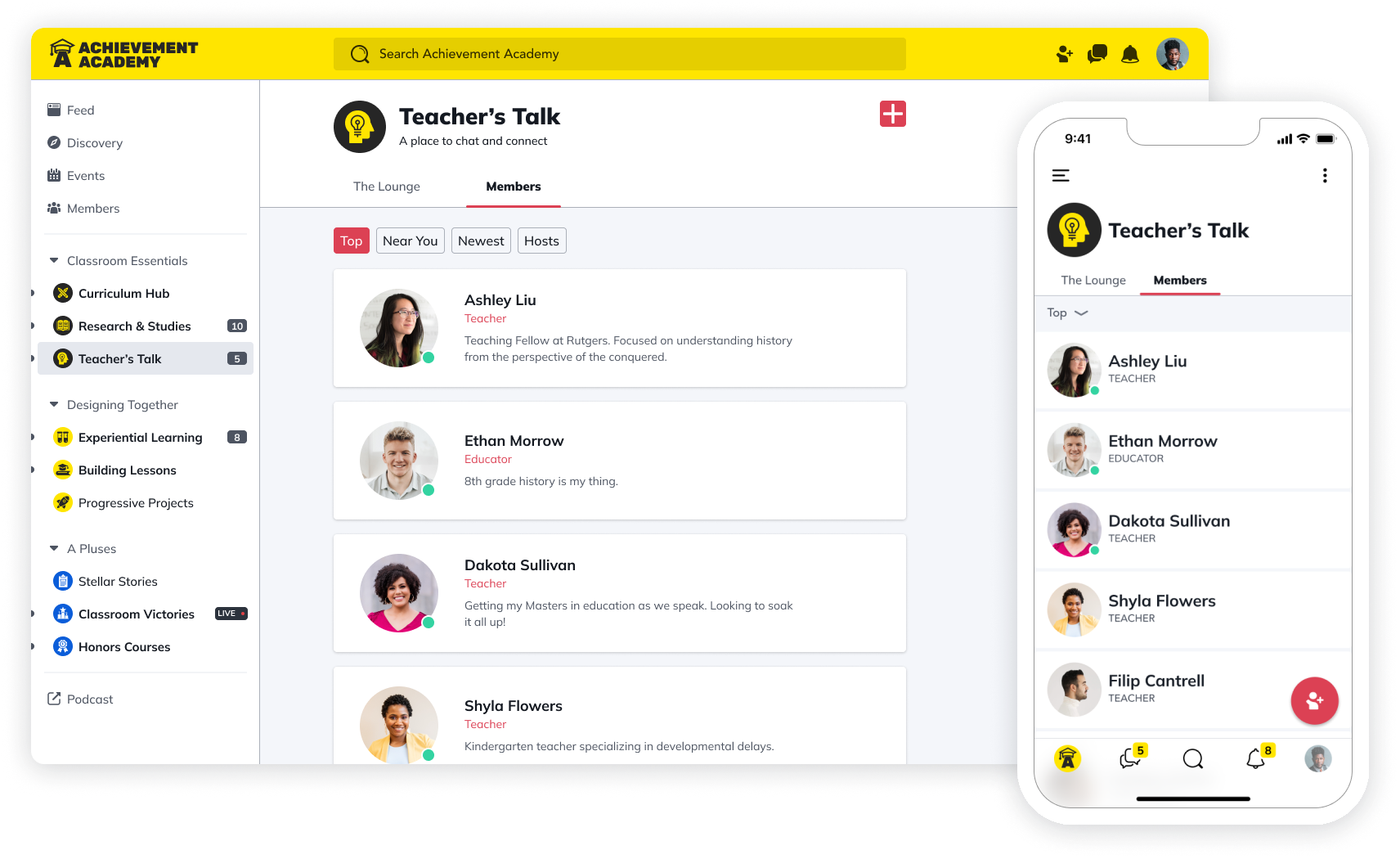
How to build a brand community
1. Understand your members
Identify your Ideal Member
Most brands launch products and marketing campaigns around ideal customers, but we launch communities around Ideal Members.
Is there a difference?
Yes. Ideal customers are transactional. You want to exchange a good or service for money with them. They are only ideal because of their transactional fit for this exchange. In other words, the customer is ideal because of their financial value–and nothing else.
An Ideal Member–by contrast–is ideal because they fit the long-term, human connection goals for your brand. They have a perspective, something to share. They have hopes and dreams your brand can help them with. And your brand community will be better because of the time they spend there.
That’s a HUGE difference.
And by optimizing for connection instead of conversion, you ironically get more value per customer.

Create member personas
Here’s how to find your Ideal Members. You can usually start to find your Ideal Member with a familiar exercise. Start to create personas. Dig deep into the psychographics and demographics of these members, and let your brand’s story guide you.
Here are some questions to ask:
What kind of problems does the Ideal Member have that our brand can help with?
What is it about our brand story that resonates with members?
What do they get from belonging to the brand community?
What will they bring to the community?
What types of perspectives or experiences do they have?
Who are they? (e.g. entrepreneurs, single parents, college athletes)
You can develop your member personas as far as you can, but at some point, you’ll need to take the next step.
Ask them.
Research your Ideal Members
There’s no research like sitting with your Ideal Members and asking them questions. Interview 10-20 of your potential members to see what they would get from a community.
It’s important to be honest about the responses too. If you’re going to have a thriving brand community, you’ll need a clear picture of how it’s going to work–the long-term value that members will get.

Check out competitors' communities
If you’ve got competitors with brand communities, it’s worth checking out what’s working and what’s not working there. Both the good and bad will help you plot a community that members will love. Pay attention to the questions people ask, the problems they raise, and the way the community functions.
Can your brand do it better? Can you harness some of that member energy?
2. Set your Big Purpose
Defining your brand’s Big Purpose
When we’re dealing with communities, we have a different word for a mission statement. We call it a Big Purpose. A Big Purpose is the reason people will join and stay. It’s the reason they’ll devote energy to your brand over someone else’s.
A Big Purpose is the formula for member-led growth.
It looks like this:
If you want help to develop your Big Purpose, you can try our community name generator. It can generate a Big Purpose for you.
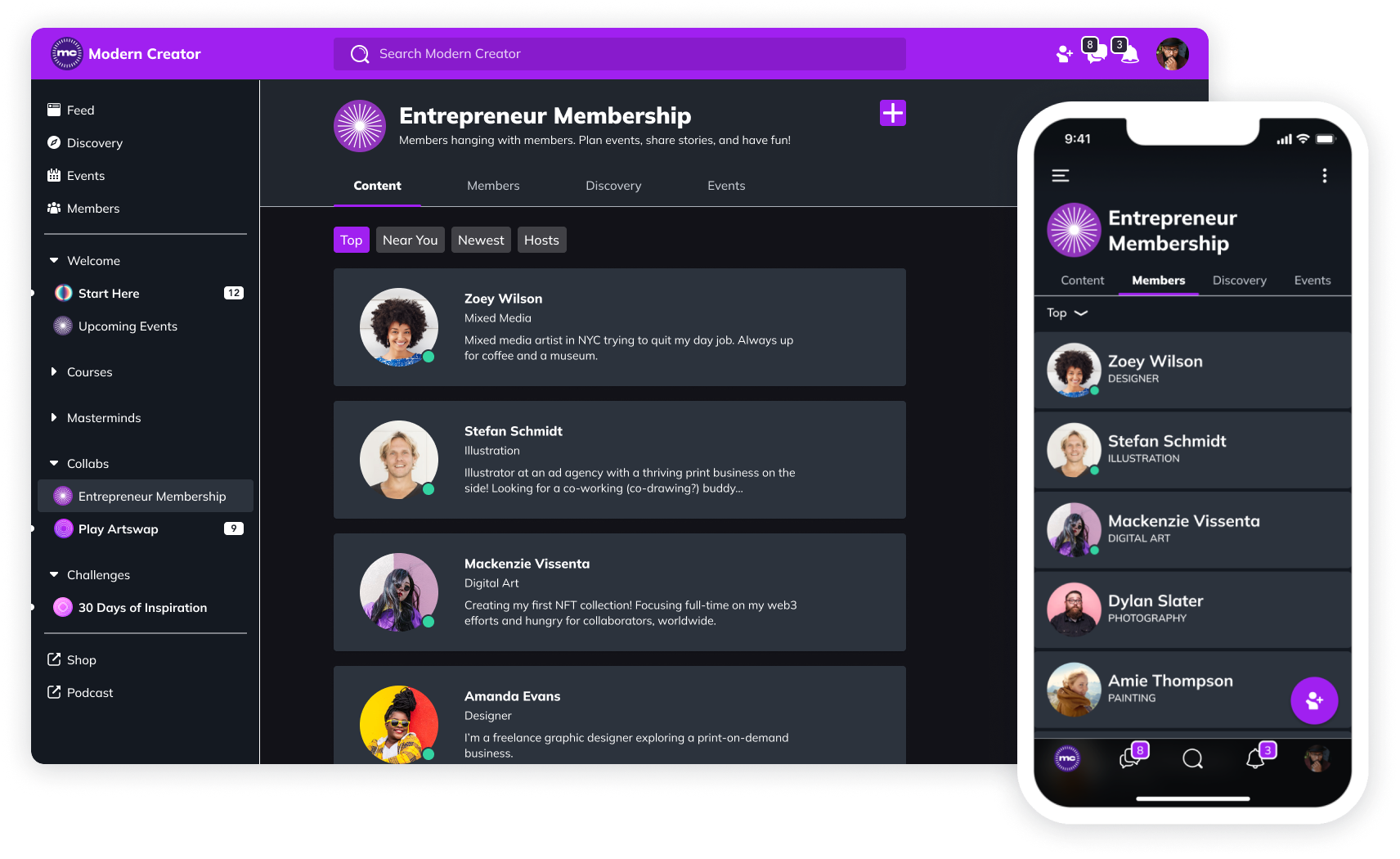
Set your community goals
One unique step to brand communities is that your brand should take the time to set clear community goals. What constitutes success? What is the purpose of your community?
Different brand communities have different goals.
For example:
A place for supermembers to meet and engage
A source of technical knowledge sharing
A chance to create energy and enthusiasm from live events
Helping members reach their goals with a branded community app
Create reliable revenue from selling memberships or digital products
Not every community shares all these goals. For example, Quickbooks’ brand communities are a place to share bookkeeping knowledge and get help with the technical use of the program. Sadie Robertson Huff’s brand community–LO Sister–helps members connect, make friends, and learn.
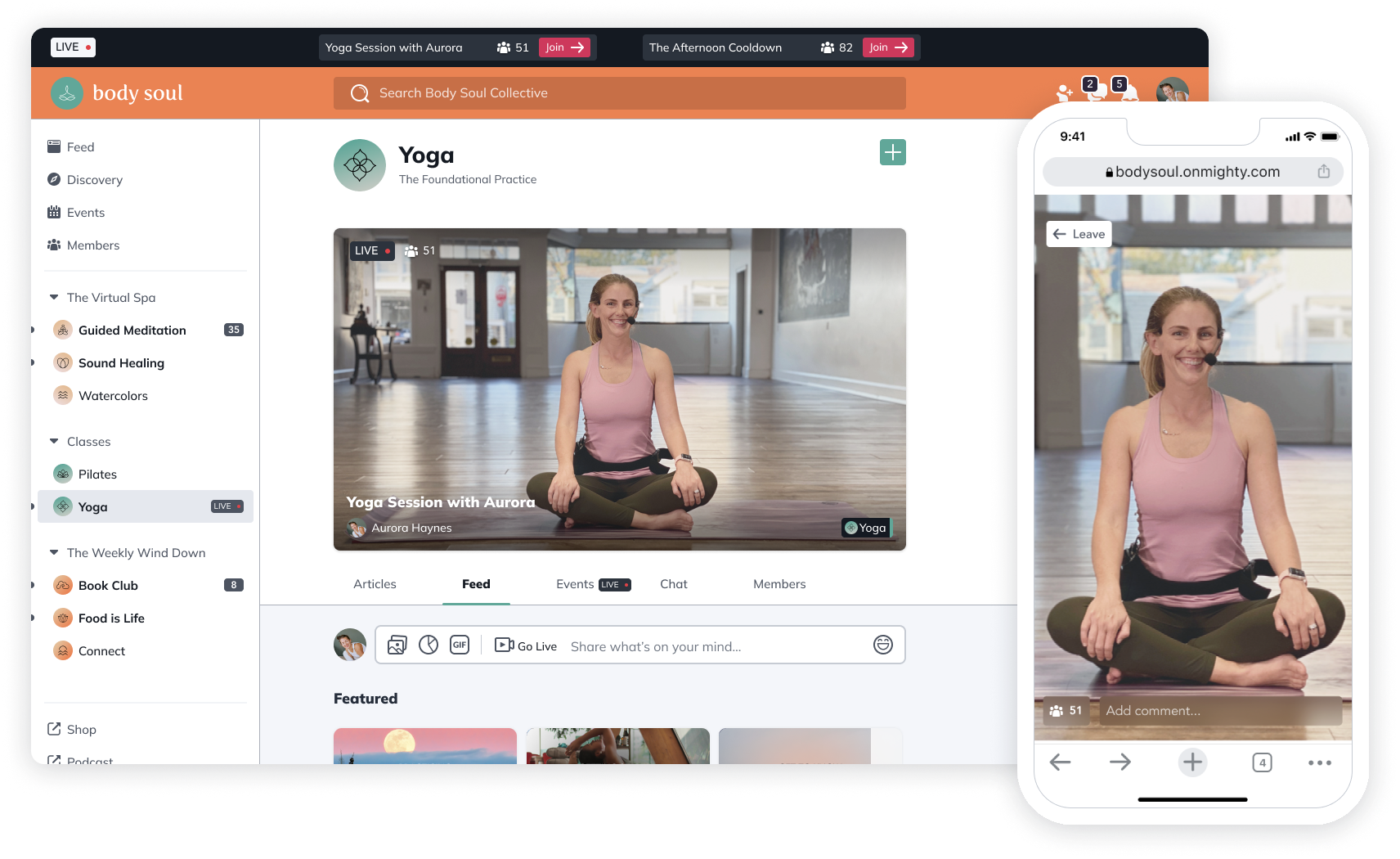
3. Choose the Right Platform
Where you can build a brand community
Every brand community lives on a platform of some kind. Here are some of the common places to build brand communities:
Social Media Platforms: Some brands try to build community on social media platforms. The appeal is obvious. All of the potential members are there. BUT, while a post occasionally breaks through the noise, brands face an uphill struggle. There are no guarantees your members see what you post, and the algorithm is fickle. (For example, a Facebook Group is a free and apparently easy way to build a brand community. But very few brands are able to grow thriving communities there–there are just too many disadvantages to Facebook.)
Free community platforms: Platforms like Discord will offer some community-building features for free (e.g. forums, messaging, livestreaming). But “free” in this case means you can’t build under your own brand, you don’t really own anything, and you can’t monetize or sell.
Legacy community platforms: A lot of the community platforms on the market have some of the basics right, but haven’t developed community tools in the way they should. Many corporate community platforms feel dated–feel corporate. These can work for building communities that tack on to an existing website (like a straight member forum with some member management features), but you’ll hit some limitations:
Lack of complete member tools: e.g. It’s got a forum, but no events. It’s got member profiles, but no monetization. Too many community platforms give you some ways to reach your members–not enough.
Lack of YOUR brand: This is YOUR brand’s community. A community platform should give you enough flexibility and tools to make it look like your brand… and not someone else’s.
Difficult admin: If the admin side of your brand community takes all your time, it’s wrong. You should be able to automate pretty much everything technical and focus on engaging with members.
Lack of app options: Finally, the best brand communities we see all engage on apps–usually branded apps. If the community platform gives you a WordPress plugin for your website but no app, you need to keep looking.
Unified member platforms: The best community platforms fix the problems above, giving you: a complete suite of member tools; total control of your brand; powerful admin functions and AI tools to make running your brand community easy; total branding power and an app under your logo in the App Store and Google Play Store.
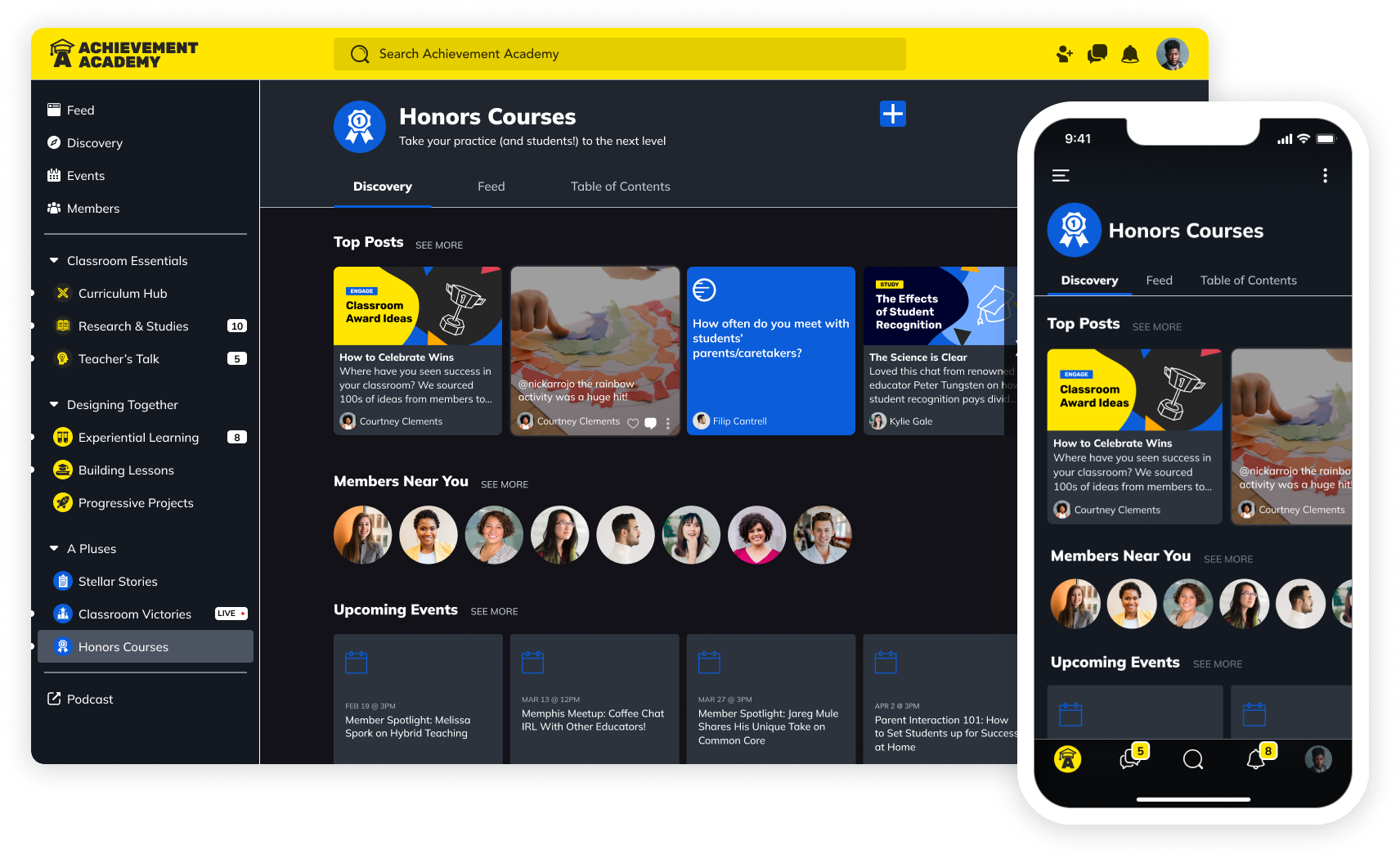
Features to look for in a community platform
When you choose to build on a community platform, here are some of the common features to watch for.
Admin Features
Member management
Easy plan creation
Analytics
AI tools
Engagement features
Events
Livestreaming
Discussion forums
Activity feeds
Spaces and subgroups (for organization)
Chat & messaging
Email
Branding features
Customization
Light & dark mode
Personalized experiences
Branded apps
Business tools
Point of sale
Create plans & bundles
Build landing & sales pages
Sell products & memberships
Sell in different currencies
Not every brand needs all of these, but many brands need most of these–if not now, as you grow. It’s important to choose a unified member platform that gives you all these and more. We’ll get to some suggestions below.
Content options And to all the features below, you need content options. Brand communities run on content. Member-generated content. Content you create for your members. All of the things above give you the infrastructure to put your community in place, but it’s the content that brings it to life.
You should be able to create pretty much any type of content you want.

4. Create your content strategy
What sets a community apart? One of the biggest things is the type of content.
On most social media, you have to create content non-stop. We call it the content treadmill. When the content stops, your engagement stops.
So you find yourself…
Crying on LinkedIn
Doing interpretive dance on TikTok
Launching endless Facebook posts that get likes from the same 2 people…
You don’t need to do that in a community.
Content on most of the internet is performing. It’s you trying to entertain and inform, and maybe somewhere in there to sell.

In a community, a content strategy means bringing people into conversation.
It’s productive. And it’s user-generated too. Hosts are often surprised that the shift in community is away from creating all the content toward Hosting and curating content–much of which comes from users.
There are a few ways we like to think about structuring community content, and it’s all taken from our research-backed method of Community Design™.
Basically, there are time-bound content goals:
A year in the life - What are the goals one year from now that your content needs to support? What will be true about your community members because they spent a year in your brand community?
Monthly themes - Divide that yearly goal into manageable monthly content themes. Your content strategy is all about member transformation. The monthly theme could contain: a webinar, a discussion in the forum, Q&As, polls, a livestream, or a conference. Any of these can be ways of helping members reach their goals.
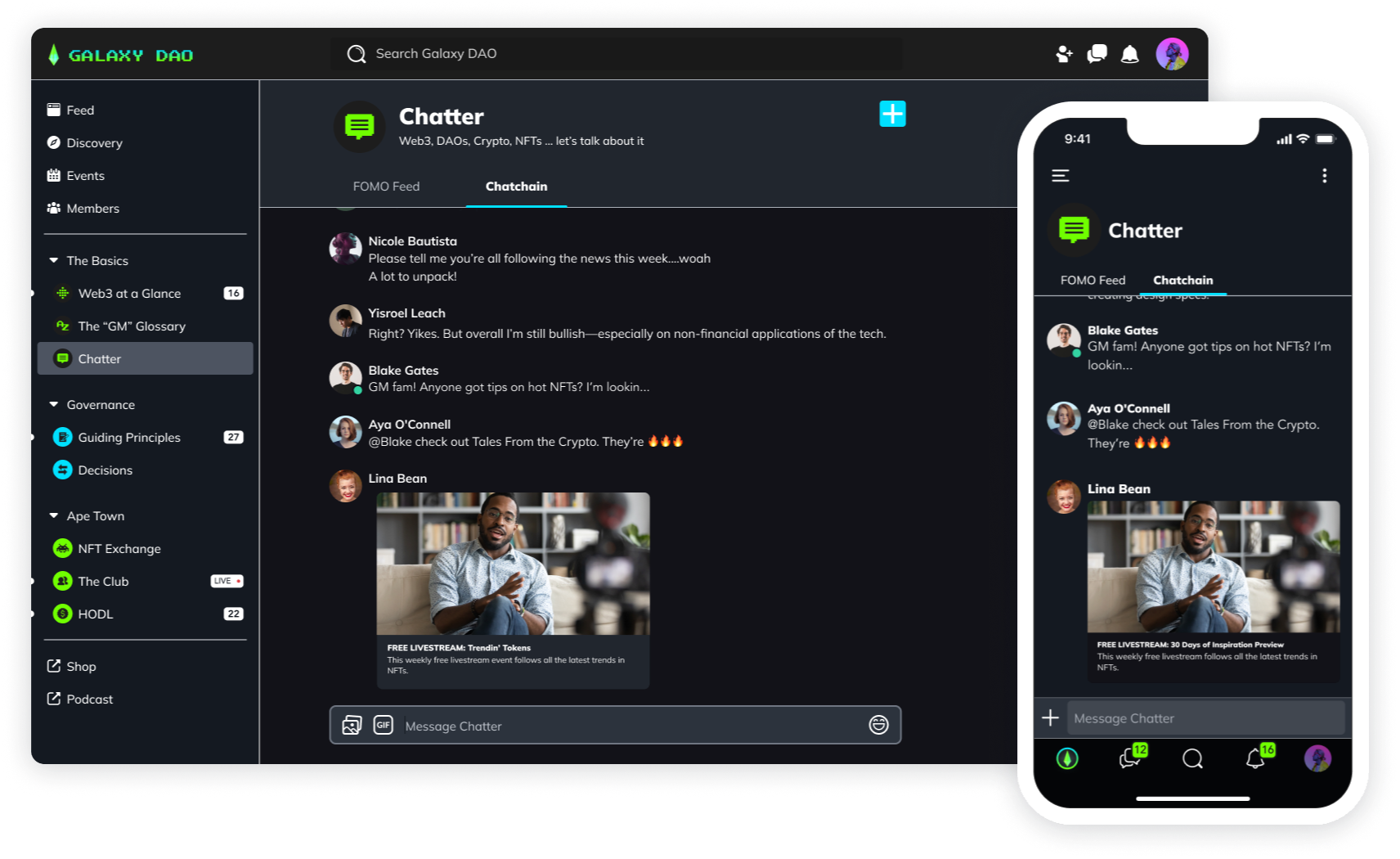
5. Launch your community
Invite your first members
With your platform set up and your content ready, you can start inviting your members and building engagement!
Here are some ways to get members into your community:
An email to your list with an invite.
Posts on social.
Add a landing page to your website.
Make announcements in other relevant groups you run (e.g. Facebook)
Consider a launch event!
We’ve got a bunch of other good resources on growing communities, or how to move a community from an existing platform.
Create an amazing new member experience
When members come into your community, what’s the first thing they see?
Just like walking into a party where you don’t know anyone, the first part is what determines whether members stay or leave.
And that’s why we’ve become huge fans of an engaging new member experience, that automates your welcome and brings people right into your community. (The best platforms will let you create awesome new member experiences and automate them.)
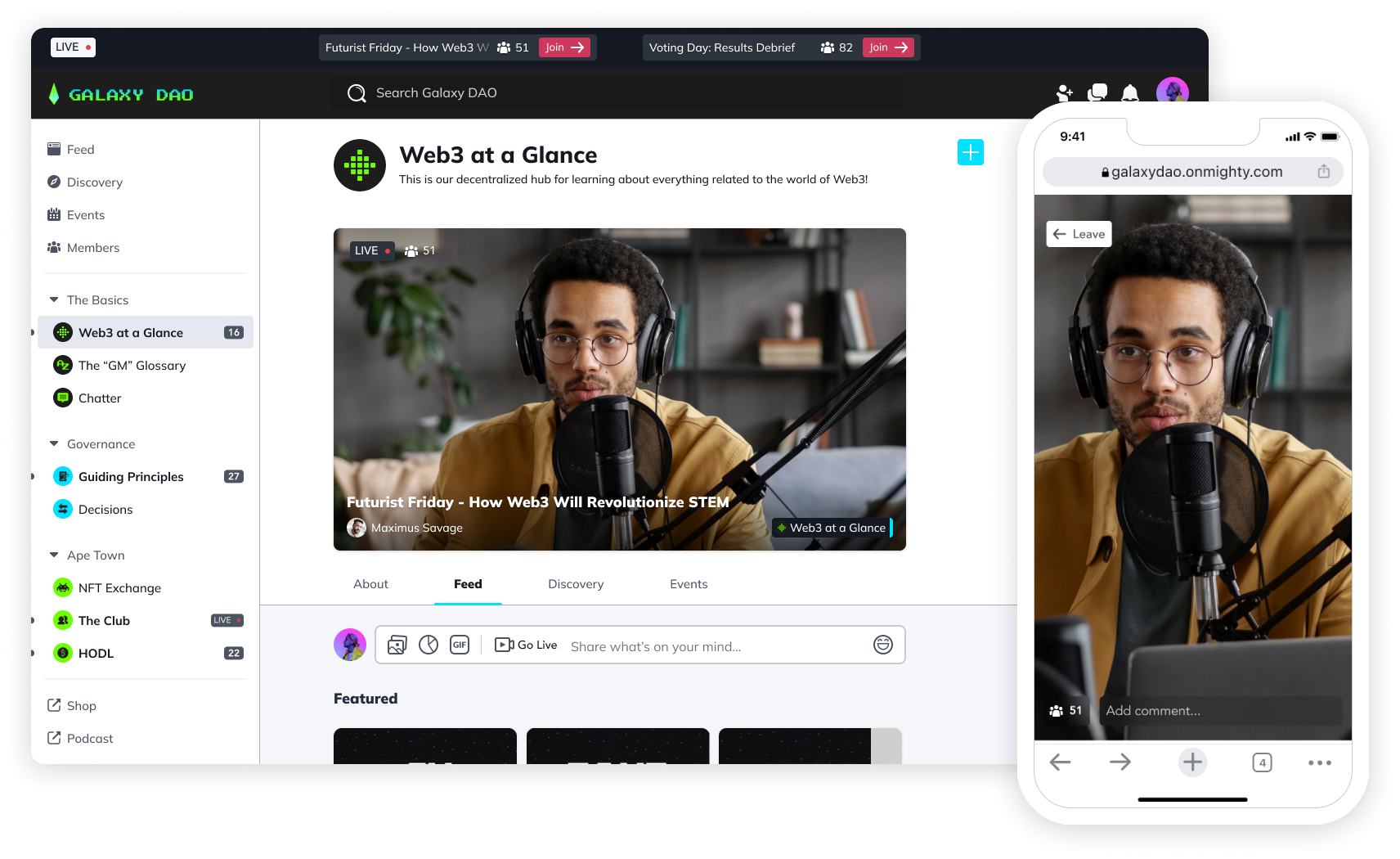
6. Create culture
Effective communities aren’t just discussion forums or brand support channels. The most effective online brand communities create their own unique culture. Here’s how:
Belonging: the best communities go beyond participation and give people a place to belong. Imagine if your members found “their people” in your brand community. There’s nothing else like that.
Directing energy: Whether it’s creating challenges, thrilling live events, or your brand community becomes the place people go every day (instead of social media)--brand communities become the place people want to direct their creative energy. (And when we use AI, we use it to foster and boost human creativity–NOT to replace it.)
Celebration: The community can become a place where your members celebrate their accomplishments and you watch them grow.
Trust: Every community has some sort of conflict. If it doesn’t, there aren’t people engaging. But creating a positive culture means building trust and safety, not to mention making sure conflict gets quickly resolved and dealt with. Your members also get involved in community moderation, because they care about your community too.
7. Offer products
Once you’ve done the work to build what McKinsey calls a “community flywheel”, it dramatically changes the final part of your business. Your offers.
You can throw away your funnel and get rid of high-pressure sales tactics. Because a thriving brand community makes selling effortless–your supermembers are waiting for you to offer more. They often even ask.
Here are some of the amazing things we’ve seen from community offers:
A health-focused launch to 100 high-ticket members added $40,000 in ARR.
An author & speaker launched a 4-week promotion and saw an additional $30,000 in revenue.
A podcaster and author sold 5,000 seats to a $997 course in 10 days.
One community launched a 13-week add-on course and generated an additional $100k in revenue in 2 months.
One personal finance community generated $130K in five days with their latest course.
Here are some other ideas for what you can offer your amazing community members:
Early access
Premium events
Exclusive benefits
Loyalty rewards
Discounts
Your brand community members are amazing, so do take care of them!

8. Measure success
How can you tell if your brand community is working? While it’s not always possible to clearly draw lines between a brand community and your business, it might be easier than you think.
Here are some key ways to measure success:
Use Analytics
A good community or unified member platform should come with detailed community analytics. These should help you get real numbers about your community engagement, time spent, log-ons, etc. For example, we recently had a social impact SAAS company move to a branded community app with their regular conferences that saw a 70% increase in contributions & engagement.
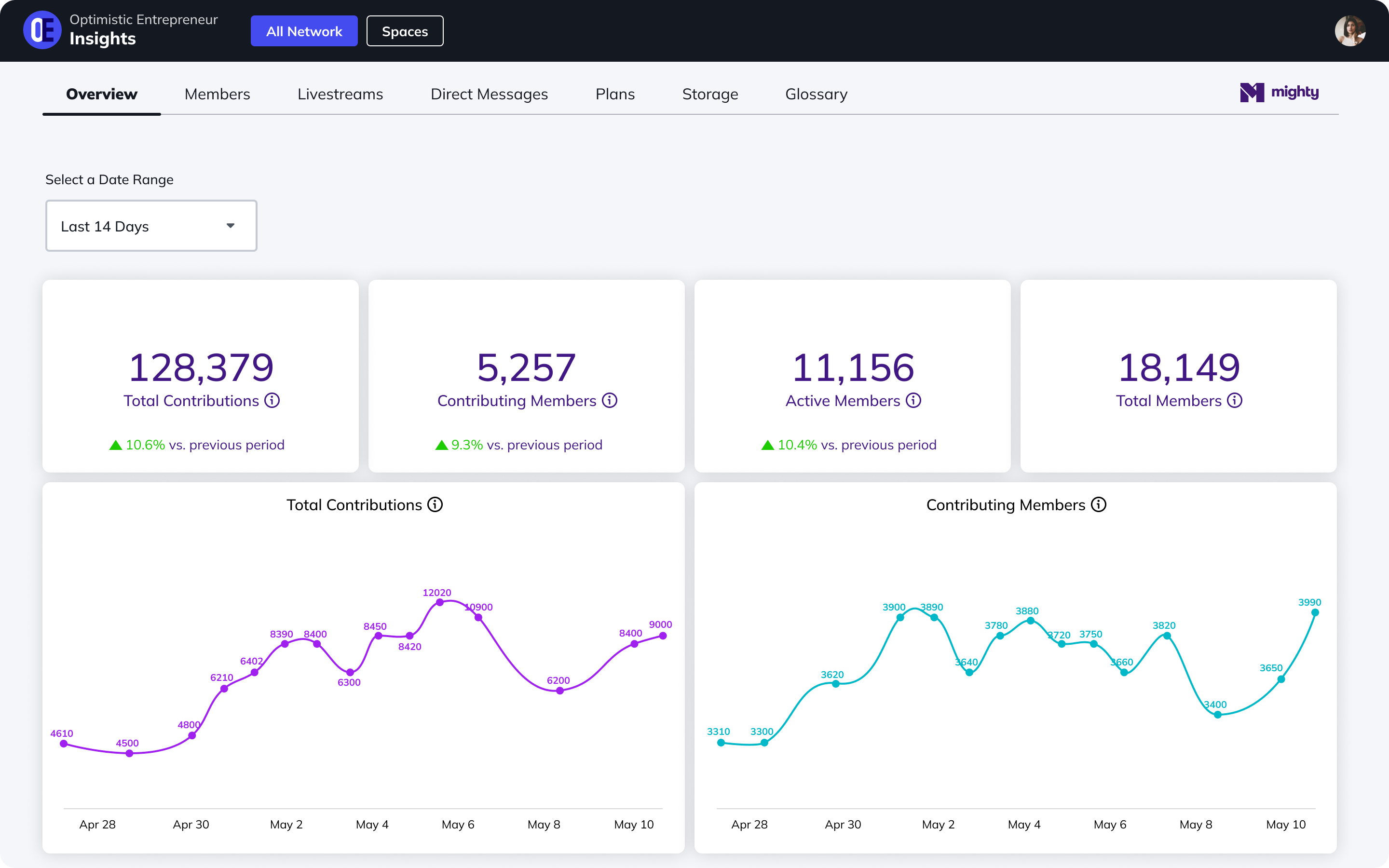
Measuring engagement is an easy way to measure success. If you’ve set out brand KPIs for your community, you can measure against these. (When you build on Mighty Pro, our team can help you set these.)
Check your lifetime value
If you’re selling a membership to your brand community (or selling other things in the community), it becomes easy to determine what most people call a customer's lifetime value (we’ll call it a MEMBER lifetime value). This will be a metric that looks at your membership revenue and your membership churn rate to understand what each member is worth to your brand.
This also makes it easier to make decisions about member acquisition too–if the cost to acquire a member is considerably lower than your average member’s lifetime value, you’ve got a clear growth formula.
Ask your members
If you want some direct feedback, why not ask your members? It’s easy to create a poll or even a longer-form survey to see what’s working and what’s not working about your community. You might also be surprised to find that members are willing to give you honest feedback publicly in the community–it’s part of the magic of creating the trust that a community needs.\

9. Keep growing
As you see some early success in your community, you can lean in and see some sustainable growth. Communities are remarkably scalable as products, but still, some things change as you grow.
You won’t know all of your members anymore. As your community grows, you’ll probably recognize your supermembers, but there might be lots of people you don’t know. At this point, you can’t try to do member engagement at a 1:1 level anymore. You’ve got to let the community work.
Enlist your supers. You can recruit and train supermembers as moderators or give them responsibility. Your best members will love this.
Consider a community manager. We’ve made our unified member platform really scalable, ensuring that the platform can take care of a lot of community management without you needing to think about it. But at some point, many brand communities appoint/hire a community manager. It likely doesn’t need to be a full-time job, but someone devoting energy to keeping your community thriving is a good investment.
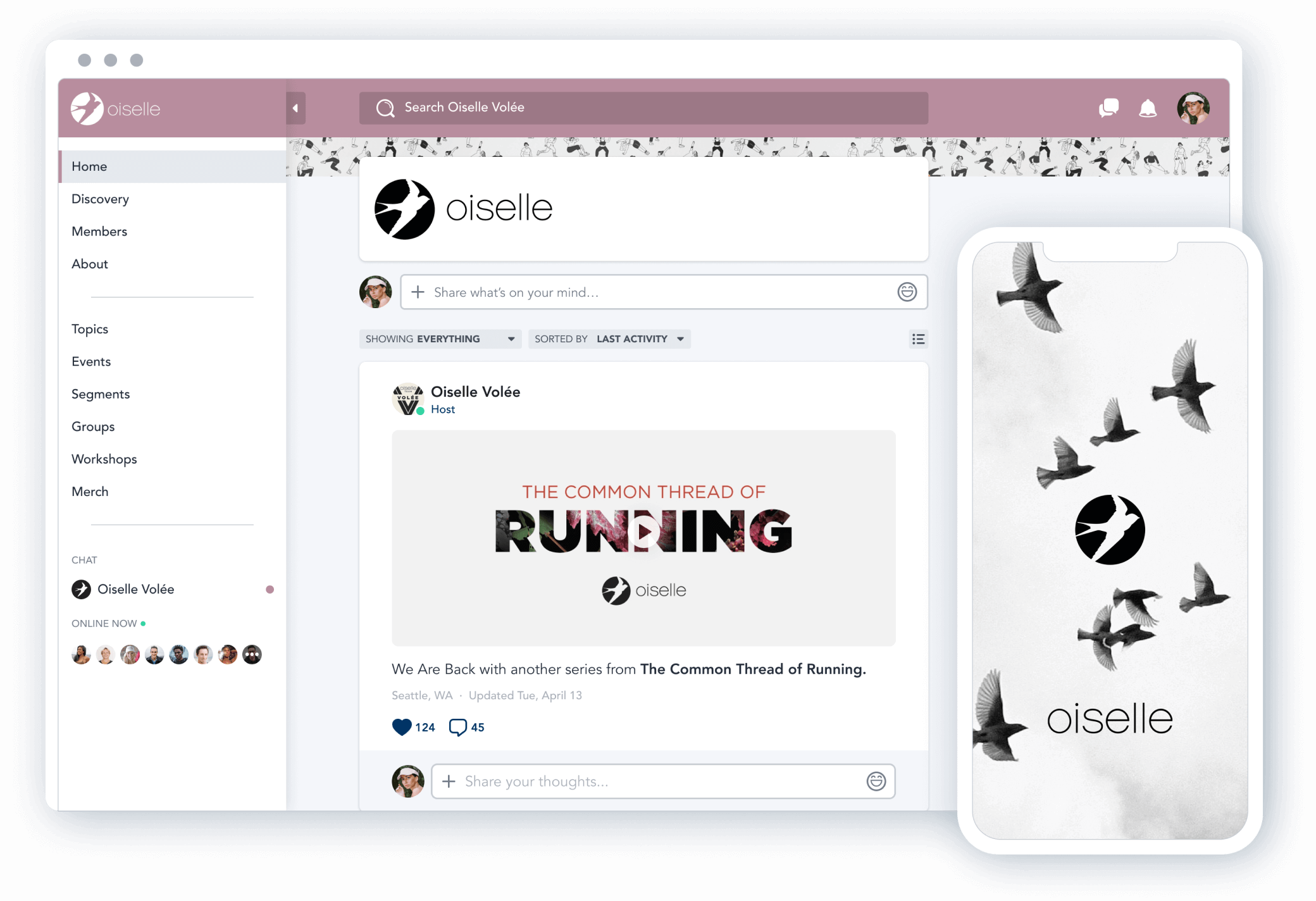
Examples of brand communities
If you want some great examples of brand communities, we’ve got a full post dedicated to showing you some great ideas. But here’s a list of what you’ll find there. These are some brands with great communities:
LO Sister: A faith-based community for young women.
Lego: A cool online brand community where people share their lego builds.
Airbnb: A community where Airbnb hosts share knowledge.
Sktchy Art School: A community dedicated to the love of drawing.
Apple: The powerhouse brand has a cool brand community where superusers come and give customer support–and it’s gamified.
There are lots more case studies to check out here.

Ready to build?
If you’re ready to build your own thriving brand community, come build with Mighty! Mighty is a unified member platform that brings together member management, content, community, events, courses, and engagement features, all under your own brand and branded app. With our flexible Spaces, you can add in discussion forums, livestreaming, virtual events, chat and messaging, and member profiles.
With Mighty’s AI tools, community management gets RADICALLY easier–you can instantly create landing and sales pages, one-click member profiles, the “make it better” text editor, instant course outlines, and the infinite question generator. And Mighty’s ConvertKit integration connects powerful email software to your community.
Book a call with us today and we’ll show you what we could build together!
Ready to start building your community?
Start a free 14-day trial to explore Mighty—no credit card required.
More like this
Join Mighty Community
Learn the principles of Community Design™ (and see them in action) alongside thousands of creators and entrepreneurs. It's free to join!

Online Courses
Creating a Course
Teaching a Course
Course Platforms
Selling a Course
Communities & Memberships
Community Platforms
Managing a Community
Building a Community
Growing a Community
Monetizing a Community
Content Creation
Creators & Entrepreneurs
Monetization
Content Creation
Starting a Business
Website Builders
Creating & Managing a Website
Events
Event Platforms
Hosting & Marketing Events
Branded Apps
Creating a Mobile App
Coaching Apps
Community Apps
Coaching
Mastermind Groups
Starting a Coaching Business
Coaching Platforms
Filter by Category
Online Courses
Communities & Memberships
Creators & Entrepreneurs
Events
Branded Apps
Coaching
Build a $1 Million Community
This free masterclass went viral—sign up to learn why.









